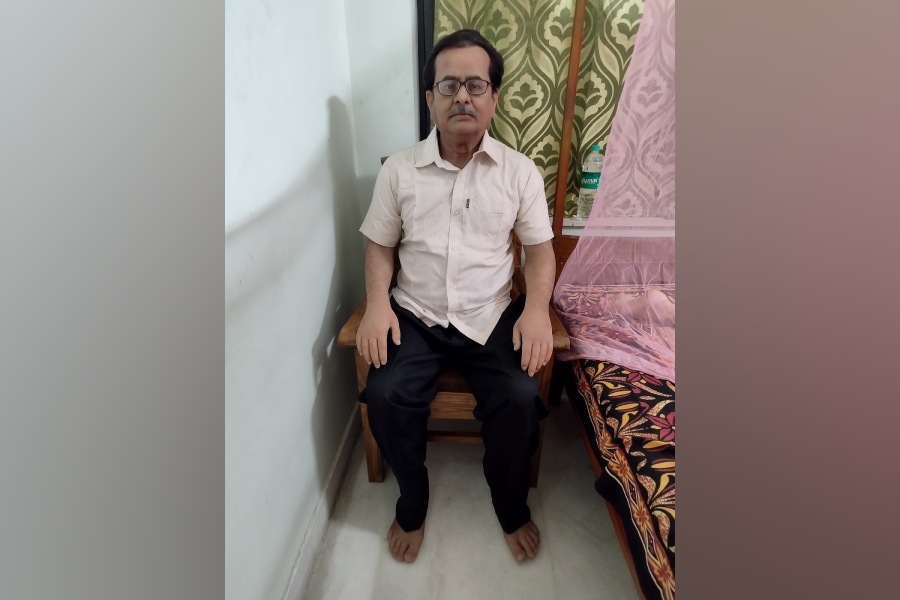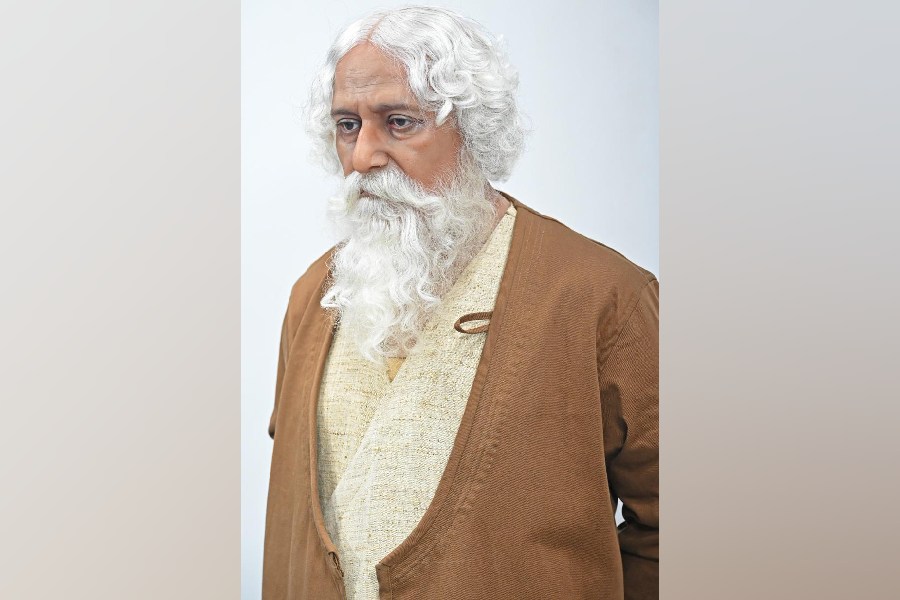Members of the Goswami family in Birbhum’s Suri, about 200 km north of Kolkata, begin their day under the watchful presence of someone they deeply loved and lost. He no longer speaks, but they still talk to him, finding comfort in his presence in the form of a life-sized silicone statue.
The statue of Dr Nemai Chandra Goswami, a retired professor who passed away in 2022, sits inside the Goswami residence — his hand resting on the armrest of a chair, his posture relaxed.
“We were devastated after my father’s death. My younger brother was really close to him,” said Bipasha Goswami, the eldest daughter of the family, who decided to get the statue built.
“In a photo, it might feel like the person isn’t there. But with the statue here, you can shake his hand, touch his shoulder or comb his hair,” she added.
Theirs is not a unique story anymore. In homes across Bengal, a number of families are turning to hyper-realistic statues to recreate the presence of loved ones they’ve lost.
These are not marble busts or museum exhibits. These statues wear real clothes. They sit, stand, sometimes even lean against the wall. And for those who live with them, they offer something that photos and rituals often cannot — a continuing relationship.
Behind these statues is Subimal Das, whose Birati-based workshop has slowly become a destination for the bereaved. The studio looks like any other suburban workspace. But inside the space, faces are shaped in clay, then rubber, then silicone.
Das didn’t start with such commissions. “In 2013, I was working in an agency in Delhi. Anandpur Sahib, which is called Ajuga in India, had a requirement — they wanted a silicone statue to be placed there. I didn’t know about silicone at that time,” he said.
Initially, his work remained confined to museums and public spaces. But one request during the pandemic changed everything. A man named Tapas Kumar Sandilya approached him, requesting a statue of his wife, who had died of Covid-19.
“There was a lot of pressure from his family against it. There was a situation where someone told me, ‘If you make the statue, I will destroy it’,” Das recalls.
Since then, the studio has seen an increasing number of families arriving with photos, old clothes, audio clips, even voice notes — anything to help the team recreate not just a figure, but a presence.
Das works with a team of 75 to 80 artists, most of them graduates from art colleges. Together, they sculpt, cast, paint, and dress each statue.
“It takes me around one-and-a-half months to make a statue,” Das said. “There are people who don't have good pictures. So we start with a normal picture and do clay modelling. After that, we colour it to see if it matches the character. Then we mould it with rubber and fibreglass.”
“After moulding, we apply silicone, which is a flexible material. There is a layer of silicone and a layer of fibreglass. The mould weighs around 30–35 kg. After colouring, joining, pigmentation, and drafting, we apply the real cloth — the real dress or a customised one — based on the picture,” Das explained.
The silicone is imported from the US. “We use imported silicone. The rest of the material is available in Kolkata,” Das said.
Each statue is priced at around Rs 3.25 lakh.
Families are involved in every stage of the process — from selecting a preferred photograph to approving the statue’s expression. “After seeing the picture, we ask for the height and weight. We also ask for the skin tone,” said Das.
Sthita Pal Bagchi’s home in Jhargram has turned into a memory museum, thanks to Das’s team. Her son, Swarnab, a young musician, died at the age of 27, but the couple keep his memories alive through his statue.
“My son was deeply passionate about music — he would often immerse himself in jeevanmukhi songs,” Sthita recalled, her voice softening. “Before he left us, he told us that when we’re gone, he’d like to keep our statues. After his sudden passing, it felt only right that we make one of him.”
Sthita’s husband, an artist, even tried making the statue himself. “He built a frame, but he couldn’t finish it,” she recalls.
The Bagchis collected 107 of their son’s songs from YouTube, built a museum of his belongings, and placed the statue there. The museum is known as Tatan’s Silicon Museum and Junglemahal Craft Hub.
“After looking at the statue people tell me not to feel sad, they say he is still with us. Every night, his father and I sit beside his statue, we talk to him, and listen to songs in his voice,” Sthita said.
Some families say the statue helps them grieve. Others say it helps them move forward.
Samit Dutta, a lawyer from Behala, lost his father in 2022. He brought home a statue of him in early 2023.
“The likeness was so perfect — it felt like he had come back to us,” he said. “My daughter, my family — everyone at home felt an emotional connection to it. It brought comfort.”
Samit’s father had helped him through a serious illness. “I had serious health issues once — lost my vision temporarily, had to use a wheelchair. But my father always gave me strength,” he recalled.
“I used to talk to him everyday about my cases. Even now, I sit beside his statue and talk to him.”
In 2024, Samit got a statue made of his mother too. She had died in 1995. “After I saw how much peace my father’s sculpture brought us, I wanted the same for my mother.”
The clothes for the statues are often provided by the family — shirts worn daily, saris saved from special occasions.
The memory of one such commission has stayed with Das. The wife of an army officer Chandrashekhar Ganguly wanted to surprise him a statue of his late mother.
“The statue was in our Birati studio. The army officer remained silent after seeing his mother’s statue for the first time. His eyes got teary. Then he hugged me and said, ‘I won’t thank you — but what you’ve done has left a deep impression on me.’”
Not everyone supports this form of remembrance.
But for many, these statues offer something memories alone cannot. “We create them for others, and with every project, there’s joy in seeing families find peace.”









